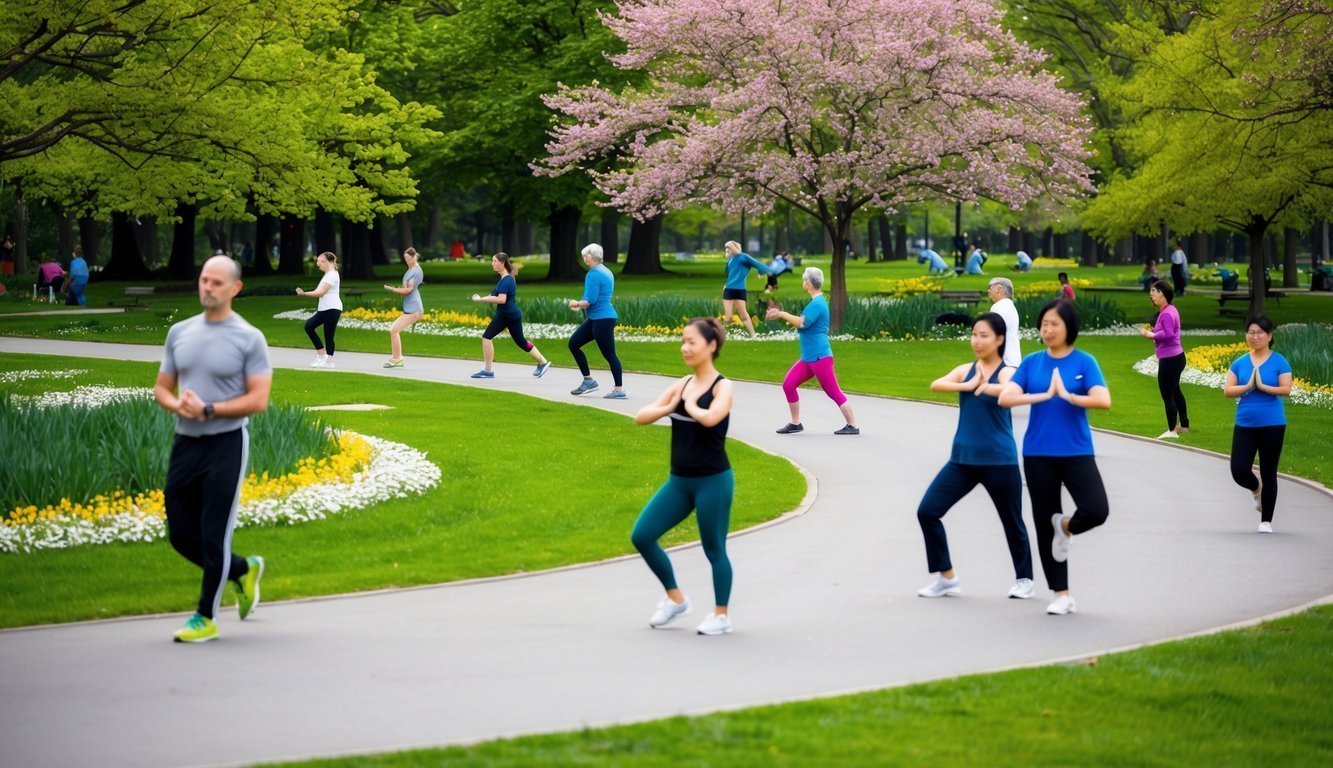PsychNewsDaily Publishers
100 Summit Drive
Burlington, MA, 01803
Telephone: (320) 349-2484
PsychNewsDaily Publishers
100 Summit Drive
Burlington, MA, 01803
Telephone: (320) 349-2484
Aging involves biological processes like DNA damage, protein misfolding, and stem cell exhaustion, leading to physical decline, chronic health issues, and increased disease vulnerability.

Aging and senescence encompass intricate biological mechanisms that result in physical and functional deterioration over time. These processes unfold at both cellular and molecular levels, influencing the overall health and longevity of living organisms.
The phenomenon of aging stems from the buildup of cellular damage and molecular alterations. Various physiological shifts occur throughout a human’s life, impacting several systems within the body. Some of the primary mechanisms are:
These factors lead to a progressive decline in organ function and a heightened vulnerability to age-related illnesses. The pace of aging can be influenced by genetic predispositions, environmental factors, and lifestyle decisions.
As cells age, they undergo profound changes that affect their functionality and viability. Cellular senescence refers to a condition in which cells stop dividing while remaining metabolically active. The buildup of senescent cells within tissues can contribute to aging and age-associated diseases.
Apoptosis, the process of programmed cell death, is essential for maintaining tissue homeostasis. In aging organisms, the equilibrium between cell death and regeneration is disrupted, potentially resulting in:
Telomeres, the protective structures at the ends of chromosomes, shorten with each cell division. When they reach critically short lengths, cells either enter senescence or die through apoptosis. This process is intricately connected to aging.
Free radicals and oxidative damage significantly accelerate cellular aging. These highly reactive molecules have the potential to harm:
While the body possesses antioxidant defenses to counteract this damage, their efficacy diminishes with age. The rising accumulation of oxidative damage over time intensifies the aging process and elevates the risk of age-related diseases.

As humans age, they experience numerous physiological transformations that impact multiple systems, including musculoskeletal, cardiovascular, metabolic, digestive, and urinary functions.
Aging leads to a gradual reduction in muscle mass and strength, a condition referred to as sarcopenia. This decline generally begins around age 30 and accelerates after 50, with older adults potentially losing 3-5% of their muscle mass each decade.
Additionally, bone density diminishes with age, which can lead to conditions like osteopenia and osteoporosis, increasing the risk of fractures and falls among older individuals. Contributing factors to bone loss include:
Proper nutrition and exercise can alleviate these effects. Resistance training and weight-bearing activities are particularly advantageous for preserving muscle mass and bone density in older adults.
The aging process profoundly influences the cardiovascular system and metabolic function. Blood vessels become less elastic, which can lead to elevated blood pressure and a higher likelihood of atherosclerosis.
Metabolic alterations can include:
These shifts may heighten the risk of heart attacks, strokes, and type 2 diabetes in older adults. Engaging in regular physical activity and adhering to a balanced diet are beneficial for preserving cardiovascular health and metabolic efficiency.
The aging heart may also see a decline in maximum heart rate and cardiac output, which can affect overall endurance and exercise capacity.
Aging brings about various changes in the digestive and urinary systems. The digestive system may experience:
These alterations can result in nutrient deficiencies and gastrointestinal discomfort for older adults. Maintaining a fiber-rich diet and proper hydration can help alleviate these challenges.
Changes in the urinary system may lead to:
Kegel exercises and bladder training can enhance urinary control among older individuals. Routine check-ups and screenings are crucial for detecting and managing age-related changes in these systems.

As individuals grow older, they become increasingly vulnerable to various health conditions that can affect their quality of life. Common issues include chronic illnesses, heightened cancer risks, and sensory impairments.
The incidence of chronic conditions rises with age. Diabetes, for instance, affects a considerable segment of the older population and can lead to complications like cardiovascular disease and nerve damage. Osteoporosis weakens bone structure, increasing the risk of fractures.
Inflammation is a significant factor in many age-associated diseases, contributing to the onset of conditions such as arthritis and heart disease. Additionally, the immune system’s efficacy declines with age, making older adults more susceptible to infections.
Concerns around obesity and weight gain are prevalent, exacerbating existing health issues and increasing the risk of new ones. Therefore, effective weight management through diet and exercise becomes crucial.
As individuals age, the likelihood of developing cancer increases. Colon cancer is particularly common among older adults, making regular screenings vital for early detection and improved treatment outcomes.
Skin cancer incidence also rises due to cumulative sun exposure throughout life. Implementing protective measures and conducting regular skin examinations are essential for prevention and timely intervention.
Hormonal shifts can raise the risk of specific cancers. For instance, postmenopausal women have a heightened susceptibility to breast cancer, while prostate cancer is more frequent in older men.
Changes in vision associated with aging are widespread. Conditions like cataracts, which cloud the lens of the eye, can lead to blurred vision. Glaucoma can damage the optic nerve, potentially resulting in blindness if untreated.
Macular degeneration impacts central vision, making tasks such as reading difficult. Regular eye examinations are essential for early detection of these conditions.
Many older adults experience hearing loss, known as presbycusis, which can result in social isolation and contribute to cognitive decline. Utilizing hearing aids and other assistive devices can greatly enhance quality of life.
Mental health is often closely linked to sensory impairments, with depression and anxiety potentially arising as a result of these changes. Addressing both physical and emotional health is crucial for the overall well-being of aging populations.

Implementing specific lifestyle changes can significantly decelerate the physical aging process. These interventions emphasize diet, exercise, and targeted training to maintain health and functionality as individuals age.
A well-balanced diet is integral to reducing physical aging. The Mediterranean diet has shown promising effects in preserving cognitive abilities and overall health among older adults. This dietary pattern prioritizes fruits, vegetables, whole grains, lean proteins, and healthy fats.
Consuming adequate protein is vital for muscle mass preservation, with older adults encouraged to aim for 1.0-1.2 grams of protein per kilogram of body weight daily.
Vitamin D supplementation may be necessary for those with limited sun exposure, supporting bone health and helping to prevent falls among the elderly.
Incorporating antioxidant-rich foods, like berries and leafy greens, can combat oxidative stress linked to aging.
Consistent physical activity is essential for sustaining health and functionality in older adults. The World Health Organization advises at least 150 minutes of moderate-intensity aerobic activity or 75 minutes of vigorous-intensity aerobic activity weekly for adults aged 65 and older.
Engaging in aerobic activities such as brisk walking, swimming, or cycling enhances cardiovascular health and supports cognitive function. These exercises should ideally be performed in sessions lasting at least 10 minutes.
Balance-enhancing activities, such as Tai Chi, can aid in fall prevention and improve stability. Spending 10-15 minutes daily on these practices can provide significant benefits.
Incorporating flexibility exercises is also recommended to maintain range of motion and prevent injuries.
Strength training is essential for preserving muscle mass and strength, both of which naturally decline with aging. Adults should aim to participate in muscle-strengthening exercises involving all major muscle groups at least twice per week.
Resistance training can be accomplished using free weights, resistance bands, or through bodyweight exercises. Starting with 1-2 sets of 8-12 repetitions per exercise is advisable, with gradual increases as strength improves.
Progressive overload, which involves incrementally increasing the weight or resistance, is crucial for continuous advancement. This method aids in combating sarcopenia, the age-related reduction of muscle mass and function.
Compound exercises, such as squats and push-ups, are particularly effective as they engage multiple muscle groups simultaneously and reflect everyday movements.

Visible physical changes associated with aging appear on the body, affecting both appearance and function, often requiring psychological adjustments.
Skin aging encompasses structural and physiological transformations within the epidermis and dermis. As collagen production decreases, wrinkles, fine lines, and age spots become increasingly noticeable.
Sun damage accelerates this aging process, leading to premature aging and a higher risk of skin cancers. Photoaging results in:
Effective protective measures, such as using sunscreen and limiting sun exposure, can help reduce these effects. Regular skincare routines can assist in maintaining skin health and appearance.
Menopause signifies a major transition in women’s lives, typically occurring between the ages of 45 and 55. This stage of life brings various physical changes due to hormonal fluctuations:
Declines in estrogen can influence numerous bodily systems, potentially leading to thinning hair, vaginal dryness, and mood swings. These transformations may affect self-perception and psychological well-being.
Hormone replacement therapy and lifestyle changes may help alleviate some symptoms.